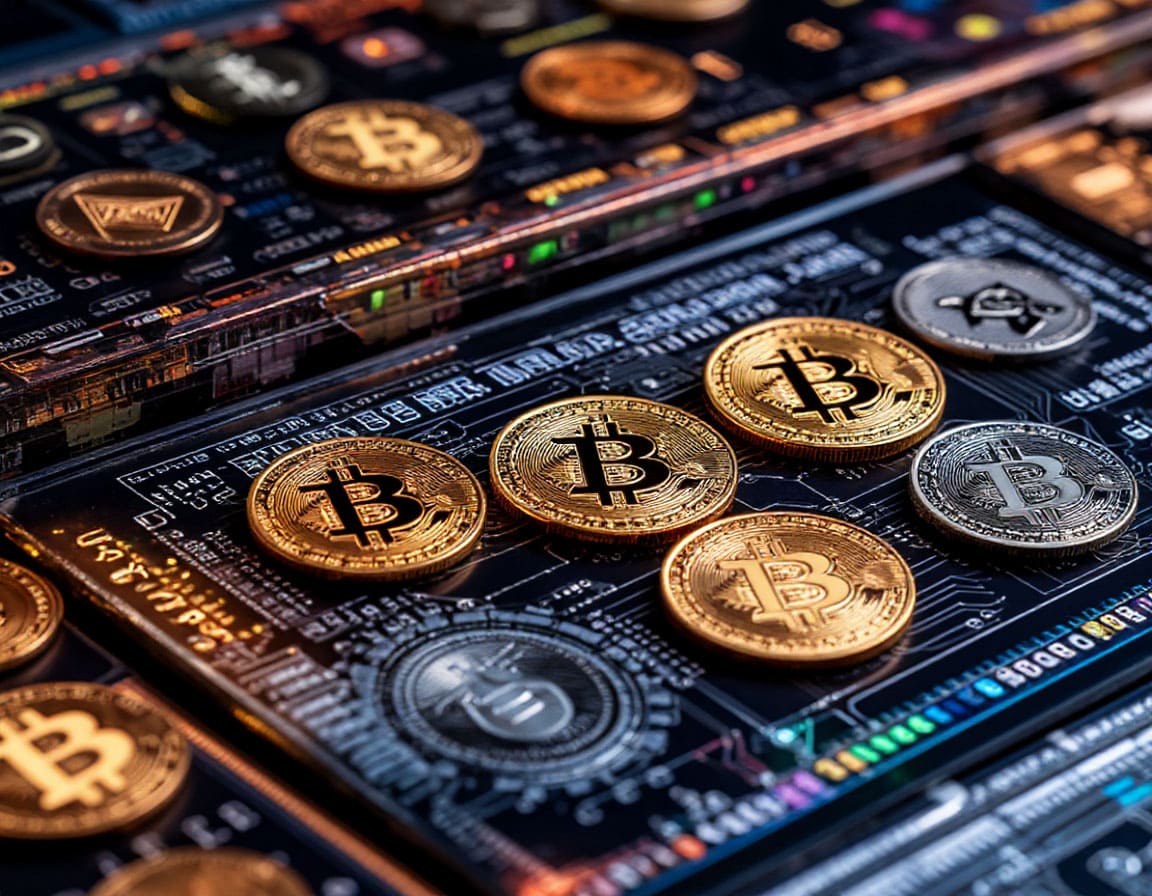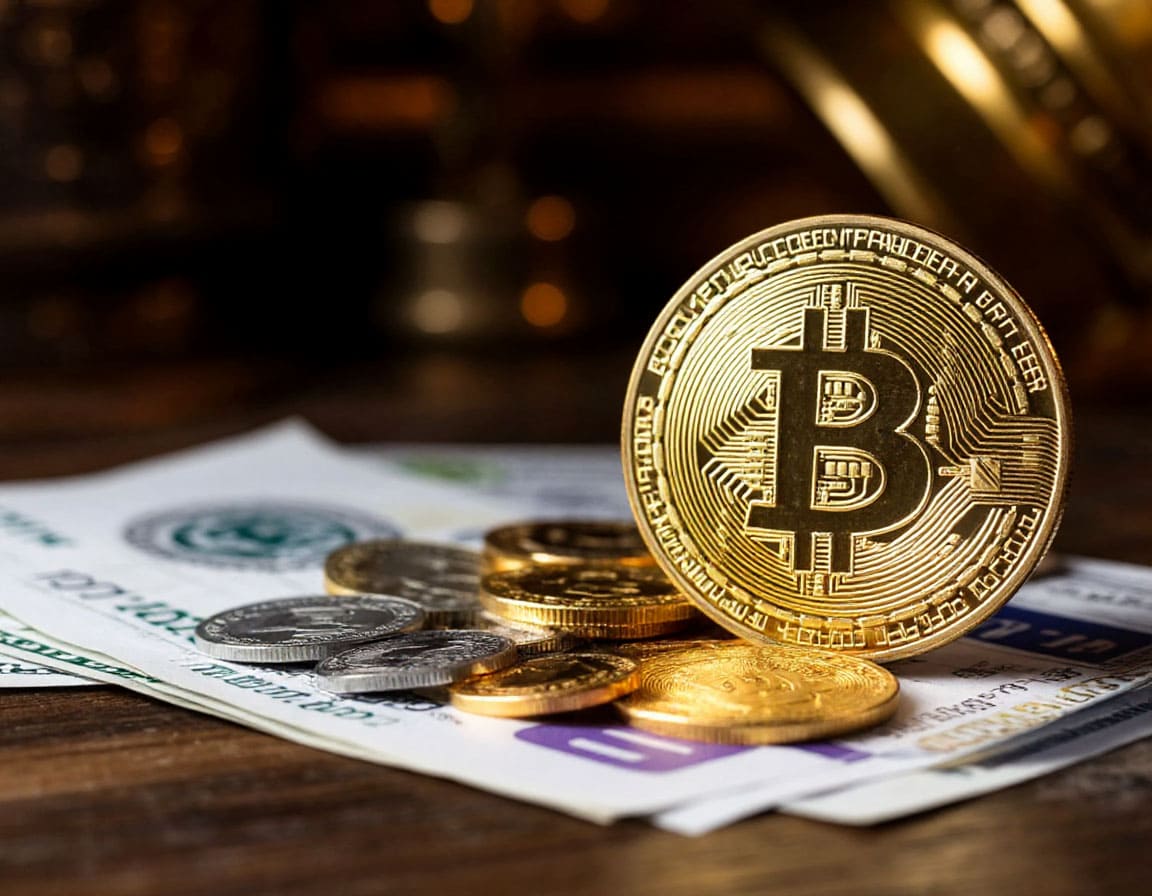Popular cryptos
XRP
Download Ironwallet app and get tool for making transaction without network fee
About XRP
XRP is a cryptocurrency that was created in 2012 by the company Ripple Labs (now called Ripple). The goal of XRP is to serve as a fast, scalable, and decentralized digital asset built for cross-border payments and settlements.
XRP utilizes a consensus protocol that enables near instant transaction confirmations without requiring mining, allowing it to scale efficiently for global financial transactions. The XRP ledger can handle 1500 transactions per second, 24×7, and facilitates micropayments with negligible fees.
History of XRP
Ripple Labs developed XRP as part of an effort to create a decentralized infrastructure for global payments. The original Ripple protocol was launched in 2012 based on previous work by developer Ryan Fugger. In 2013, Ripple Labs was co-founded by Chris Larsen and Jed McCaleb to leverage blockchain technology innovations like decentralization, transparency, and immutability for better global commerce.
The XRP digital asset was created natively on the XRP Ledger. As an independently tradable asset, XRP helped develop an ecosystem around Ripple’s cross-border payment infrastructure while also serving additional functions like providing liquidity in transactions. Over time, XRP has become one of the largest cryptocurrencies by market capitalization.
How XRP Works
Consensus ProtocolThe XRP Ledger relies on a consensus protocol called XRPL to validate transactions and achieve agreement on the network. This allows ledgers to close and payments to settle in 3-5 seconds without the energy intensive proof-of-work system used by networks like Bitcoin and Ethereum.
The XRP Ledger chooses validation nodes to make consensus decisions every few seconds, assessing factors like uptime reliability. This makes the network swift and efficient while remaining decentralized by distributing power.
Transaction SpeedXRP consistently handles 1500 transactions per second, 24×7. This level of speed and scalability exceeds other major blockchains and payment rails by over 1000x. XRP’s transaction speed stems from its consensus model as well as utilizing payment channels to bundle or settle groups of transactions off-ledger.
This exceptional transaction speed makes XRP well suited for use cases involving high volumes of payments like facilitating liquidity in currency exchanges or integrating with global banking systems.
FeesFees on the XRP Ledger dynamically scale but are consistently measured at fractions of a penny. Standard transaction costs are about 0.00001 XRP. This negligible fee level makes micropayments and frequent transactions economically viable on XRP.
Use Cases for XRP
Cross-Border PaymentsSending money across borders through traditional methods is typically slow, expensive, and opaque given the archaic infrastructure involved. XRP provides liquidity for extremely fast global value transfer at a fraction of the cost through its frictionless payments.
Financial institutions can source liquidity on demand using XRP without intermediaries and offer cheaper remittances. Rather than tying up capital, banks need only hold XRP for seconds at a time to facilitate transfers.
BankingBanks can use XRP for sourcing liquidity in cross-border payments and currency trades as well as to open up new disbursement channels. Additionally, XRP may come to serve as a bridge asset between central bank digital currencies as they continue to emerge, facilitating exchanges between digital fiat currencies.
Decentralized Finance (DeFi)Decentralized finance refers to financial applications being built on blockchain networks without centralized intermediaries. As DeFi continues growing, XRP is well positioned for integration with open money protocols to enable swift token swaps and serve as an instrument for liquidity pools and digital asset lending.
What Factors Influence the XRP Price?
Primarily, it’s the demand-supply dynamics that govern the price. A surge in transaction volumes often leads to an increase in XRP price. Another crucial factor is institutional adoption. As more businesses incorporate XRP into their transactional operations, the demand drastically escalates, positively affecting the price.
Meanwhile, Ripple’s partnerships play critical roles. Collaboration with influential financial institutions can impact Ripple’s evaluation, in essence, fuelling price growth. Furthermore, regulations significantly affect the market performance of all cryptocurrencies, including XRP. Cryptocurrency markets react volatile to changes in regulatory environments. A good example was when the SEC filed a lawsuit against Ripple Labs Inc. XRP’s value dropped significantly. Consequently, market sentiment directly reflects on the Ripple price.
Lastly, the internet plays an instrumental role in shaping up sentiment about cryptos. Crypto enthusiasts, influencers, and journalists alter mindsets with their opinions and reports, and this ripple effect influences XRP’s demand and price. Therefore, the combined effect of these factors makes the Ripple price highly volatile and unpredictable, similar to other cryptocurrencies in the market.
Future Outlook for XRP
CompetitionThe cryptocurrency industry has exploded in recent years with the introduction of thousands of digital assets serving different purposes. XRP functions specifically to solve issues regarding global payments, though assets like Bitcoin and Ethereum may compete indirectly given crypto’s overlap. More directly, other altcoins focused on cheap remittances like Stellar Lumens or using smart contracts for payments like Chainlink may compete with XRP for adoption. Ultimately though, XRP’s speed, scalability, liquidity functions, and real-world utility set it apart from most competitors.
RegulationRegulatory oversight of cryptocurrencies continues to be an evolving issue globally. Jurisdictions like the United States and China have taken varied stances. Ongoing legal action alleges XRP may have been sold improperly as an unregistered security initially by Ripple, though no formal rulings have established this and Ripple refutes the charges entirely. Ultimately, clear regulations classifying digital assets will help strengthen XRP’s position for commercial use.
Technological ImprovementsDevelopments like Ripple’s liquidity hub offering, XRP Ledger’s decentralization roadmap, and continuing integrations with international payment channels all promise to expand access and capabilities for the asset. As technology progresses, XRP is well placed to rapidly leverage innovations in blockchain to bolster real-world functionality.
Institutional AdoptionGrowing XRP adoption by banks and financial institutions will greatly reinforce its position internationally. Ripple continues signing partnerships across payment corridors like Malaysia, Brazil, and Egypt, bringing XRP’s efficient liquidity to more global markets. Moreover, supporting operations like Japan and Canada’s pending ETFs trading XRP derivatives is quickly mainstreaming institutional investment into the asset.
Conclusion
In summary, XRP represents an ambitious vision of an Internet of Value in which money moves as quickly and seamlessly as data does today. Developed for enterprise use, XRP has unparalleled transaction speed, scalability, and cost efficiencies that make it uniquely positioned for mass adoption in cross-border payments and financial systems. Real-world utility is enabling this adoption incrementally through Ripple’s partnership network with growing interest from major banks and institutions internationally. As blockchain transparency, interoperability and financial accessibility keep improving globally, XRP remains at the forefront working to realize a more inclusive and connected world economy.





















